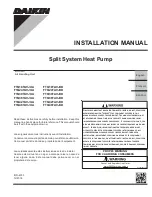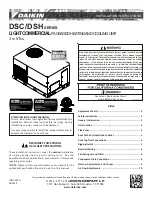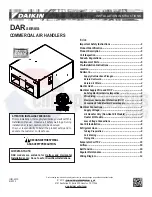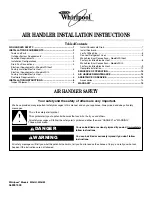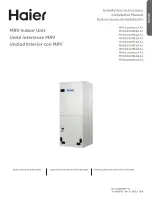
36
1 Use
1.1 Intended use
RoofVent
®
LKW units are used to supply fresh air and to
remove extract air as well as for heating and cooling coupled
with energy recovery in high spaces. Also included under
intended use are compliance with the installation, commis-
sioning, operating and maintenance provisions (operating
manual).
Any use beyond this is considered improper use. The
manufacturer shall not be held responsible for any damage
resulting from such use.
1.2 User group
RoofVent
®
LKW units may only be installed, operated
and serviced by authorised and trained specialists who
are familiar with the equipment and aware of the dangers
involved.
The operating manual is for English-speaking operating
engineers and technicians as well as specialists in building,
heating and ventilation technology.
1.3 Risks
RoofVent
®
LKW units are built to correspond to the state of
the art and to the latest safety standards. However, despite
all precautionary measures taken, there are still some poten-
tial hazards which are not immediately obvious, such as:
■
Dangers when working with the electrical systems
■
Parts (e.g. tools) can fall down below when working on the
ventilation unit.
■
Dangers when working on the roof
■
Damage to devices or components due to lightning
■
Malfunctions as a result of defective parts
■
Hazards from hot water when working on the hot water
supply
■
Ingress of water through the roof unit if the access panels
are not closed correctly
2 Construction and operation
The RoofVent
®
LKW is used for ventilating, heating and
cooling large areas (production halls, shopping centres,
sports halls, exhibition halls, etc.). It fulfils the following func-
tions:
■
Heating (with connection to central hot water supply)
■
Cooling (with connection to chilled water system)
■
Fresh air supply
■
Extract air removal
■
Recirculation
■
Energy recovery
■
Air distribution via Air-Injector
■
Air filtration
A ventilation system consists of several autonomous
RoofVent
®
LKW units and, as a rule, works without supply
and extract air ducts. The units are decentrally installed in
the roof and are also serviced from roof level.
Thanks to their high output and efficient air distribution,
RoofVent
®
LKW units have a large operating range. This
means that compared with other systems, only few units are
necessary to create the required conditions.
Three unit sizes, various coil types and a series of acces-
sories make it possible to provide a customised solution for
any hall.
2.1 Unit construction
The RoofVent
®
LKW consists of the following components:
■
Roof unit with energy recovery:
self-supporting casing made of Aluzinc sheet steel, insu-
lated inside (class B1)
■
Filter box:
available in three standard lengths per unit size for adjust-
ment to specific dimensional requirements
■
Heating/cooling section:
coil connections possible on each side (usually under-
neath the extract air grille)
■
Air-Injector:
patented, automatically adjustable vortex air distributor for
draught-free air distribution over a large area
The unit is delivered in two sections: above-roof unit and
below-roof unit (see Fig. C1). The components are bolted
together and can be dismantled individually.
RoofVent
®
LKW
Use
Summary of Contents for RoofVent CON-9
Page 2: ......
Page 4: ...2...
Page 6: ...4...
Page 8: ...6...
Page 12: ...10 RoofVent LHW Use...
Page 40: ...38 RoofVent LKW Use...
Page 68: ...66 RoofVent twin heat Use...
Page 94: ...92 RoofVent twin cool Use...
Page 122: ...120 RoofVent twin pump Use...
Page 150: ...148...
Page 154: ...152 RoofVent condens Use...
Page 180: ...210 RoofVent LH Construction and operation...
Page 208: ...238 RoofVent LK Use...
Page 256: ...286...
Page 268: ...298...
Page 274: ...304...
Page 279: ......































